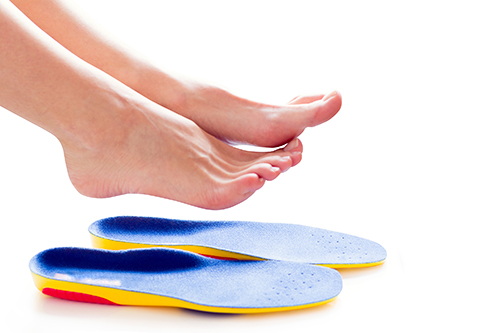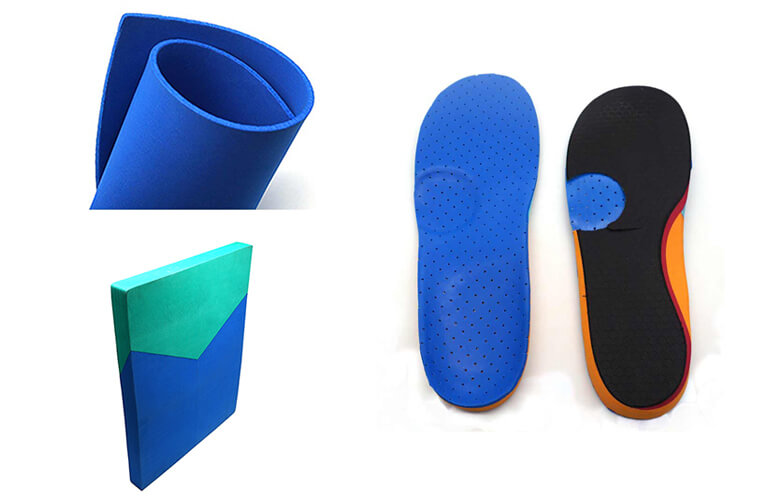










Content Menu
>> 6. Heated and Cooling Insoles
● Common Materials Used in Insoles
>> EVA Foam (Ethylene Vinyl Acetate)
>> Memory Foam
>> Gel
>> Latex Foam
>> Leather
>> Cork
● The Role of Insoles in Foot Health
● How to Choose the Right Insoles
>> Step 1: Identify Your Foot Type
>> Step 2: Match Activity Level
>> Step 3: Consider Shoe Compatibility
>> Step 4: Focus on Fit and Feel
>> Step 5: Replace at the Right Time
● OEM and Custom-Made Insoles from China Manufacturers
>> Our OEM/ODM Capabilities Include:
● Manufacturing Excellence and Quality Control
● Industry Trends and Future Development
● Benefits of Partnering with a Chinese Manufacturer
● FAQs
>> 1. What materials are best for shoe insoles?
>> 2. How often should I replace my insoles?
>> 4. Do all insoles fit every shoe type?
>> 5. Can insoles help reduce foot pain?
Insoles are one of the most vital components inside footwear, yet many people overlook their importance. Whether you're walking, running, or standing for long hours, the quality and design of your shoe insoles can significantly affect your comfort, posture, and even long-term foot health. From basic cushioning inserts to advanced orthopedic solutions, insoles have evolved into specialized products tailored for a variety of needs and lifestyles.

Insoles, often referred to as footbeds or inner soles, are the removable or built-in layers situated inside a shoe, directly beneath your feet. Their main purpose is to cushion the foot, increase comfort, improve stability, and help maintain proper alignment. Modern insoles do much more than just make shoes feel comfortable — they can help manage conditions such as plantar fasciitis, arch strain, and foot fatigue.
An ideal insole balances pressure across the foot, absorbs shock, and supports the natural curvature of the arch, allowing better walking or running efficiency. Some high-end insoles are even engineered with odor-control technology, moisture-wicking properties, and anatomical contouring.
Understanding the various types of insoles is essential to choosing the right option for your needs. Below are the most common categories and their distinct functions.
These are designed with soft foams, gels, or fabric layers to provide additional cushioning for daily use. Comfort insoles are perfect for individuals who walk a lot during work or leisure and need extra support against fatigue.
Support insoles focus on structural stability and improved foot posture. They provide enhanced arch and heel support to reduce excess pressure on specific areas. People with flat feet or high arches benefit immensely from these insoles.
Orthotic insoles are custom-made or medically prescribed inserts that correct biomechanical issues. For example, they can help align the ankles and knees properly, improving gait patterns and preventing long-term foot or knee pain.
Athletes use specialized insoles designed to optimize performance and safety. These include impact-absorbing layers, grip textures, and stability zones that ensure the foot stays secure during fast movements. Sports insoles help in reducing stress injuries and improving athletic performance.
Designed for medical and rehabilitation purposes, therapeutic insoles improve blood circulation and pressure distribution, aiding in recovery for people with diabetes or chronic foot conditions.
For those living in extreme temperatures, heated insoles offer warmth during winter, while cooling or ventilated insoles maintain breathability in summer or humid environments.
Different insole materials provide unique properties related to comfort, support, and longevity.
Lightweight and flexible, EVA foam offers superior cushion and shock absorption. It's one of the most popular choices for sports and walking shoes due to its resilience and comfort balance.
This material conforms to the shape of your foot, creating a customized feel with every use. Memory foam insoles are popular due to their ability to relieve pressure and enhance overall wearing comfort.
Gel-based insoles are ideal for individuals who stand for long periods. The gel material absorbs impact effectively, protecting the heels and metatarsal areas from excessive force.
Elastic and breathable, latex foam provides responsive cushioning and natural odor resistance. Its porous structure allows good airflow, keeping feet fresh even after extended hours.
A premium option used primarily in formal shoes. Leather insoles add sophistication while providing natural moisture absorption and durability.
Eco-friendly and firm, cork insoles mold gradually to the foot's shape, providing excellent arch support over time.

Good insoles are essential not only for comfort but also for maintaining overall body alignment. Poor insole quality can contribute to foot pain, instability, and even knee or back issues. Insoles help to:
- Absorb shock during movement, reducing joint strain.
- Promote better posture, as proper foot alignment affects spinal alignment.
- Enhance comfort by redistributing weight and reducing friction inside the shoe.
- Offer personalized support for various arch types: flat, medium, or high.
- Prolong the life of your shoes by minimizing internal wear.
For those suffering from foot fatigue or discomfort during long work shifts, replacing standard shoe inserts with specialized insoles can make a dramatic difference.
Your feet form the foundation of your body. Every step exerts pressure that travels upward through your legs, hips, and spine. A high-quality insole provides uniform weight distribution and reduces impact stress, protecting muscles and joints. Without the right insole, you may experience:
- Heel pain or plantar fasciitis
- Arch collapse or discomfort
- Ankle instability
- Calf strain or knee pain
Moreover, insoles with antimicrobial layers and moisture control help prevent odor, fungal infections, and skin irritation.
Choosing the best insole for your shoes involves balancing comfort, functionality, and the specific needs of your feet.
Determine if your feet are flat, neutral, or high-arched. Many stores and clinics offer simple tests to identify your arch profile.
If you're a runner or athlete, choose insoles that provide enhanced shock absorption and flexibility. Office workers or people who stand long hours benefit from soft-cushioning insoles.
Different shoe types require specific insole designs. Running shoes accommodate thicker inserts, whereas dress shoes may need slimmer, low-volume models.
A properly fitted insole should not crowd your toes or lift your heel out of the shoe. Always test both comfort and stability when walking.
Even premium insoles eventually lose their shape and effectiveness. Replacement every six months ensures continued support and hygiene.
Proper maintenance extends the durability of your insoles and keeps them hygienic.
- Clean regularly using mild soap and warm water.
- Air dry completely before reinserting into shoes.
- Avoid heat exposure, such as dryers or direct sunlight.
- Store correctly in a ventilated, cool area.
Routine cleaning removes sweat residue and bacteria that can degrade material quality over time.
As a leading Chinese insole manufacturer, we specialize in producing high-quality OEM and ODM insoles for international shoe brands, wholesalers, and producers. Our factory is equipped with advanced molding and lamination equipment that enables large-volume production without compromising craftsmanship.
Our product range includes EVA, PU foam, memory foam, latex, and gel insoles. We also manufacture eco-friendly and recyclable insole options to meet the sustainability goals of global shoe brands.
- Fully customizable material combinations and densities.
- Tailored sizing and ergonomic contour design.
- Private label branding and logo printing.
- Customized packaging solutions for retail presentation.
- Prototype sampling and mold development based on foot scans.
With competitive pricing, reliable quality management systems, and international shipping capabilities, we proudly serve global markets in North America, Europe, and Asia.
Our team follows rigorous quality control procedures throughout each stage of production. Every insole undergoes compression, flexibility, and wear-resistance testing to ensure maximum durability. The production process includes:
1. Material formulation and blending
2. Molding and trimming precision
3. Surface finishing and texture enhancement
4. Odor-resistance treatment
5. Final inspection and packaging
We align our manufacturing processes with international standards, ensuring that every insole batch delivers consistent performance and comfort.
The global insole market continues to grow with the increasing demand for ergonomic and sustainable footwear solutions. The key trends include:
- Smart insoles equipped with sensors for fitness tracking.
- Eco-friendly materials such as biodegradable foams and recycled textiles.
- 3D-printed insoles designed precisely according to individual foot scans.
- Hybrid cushioning systems combining gel, foam, and air pockets for enhanced comfort.
As one of China's innovative insole manufacturers, we constantly invest in material research and automation technology to meet evolving customer needs.
Partnering with an experienced insole manufacturer in China offers multiple advantages:
- Competitive pricing due to efficient production scale.
- Flexible customization with OEM/ODM service.
- Reliable supply chain for timely global delivery.
- Extensive material choice including eco-friendly and performance-grade options.
- Experienced engineers providing technical consultation for design optimization.
Our mission is to help international footwear brands enhance product quality, comfort, and brand value through precision-engineered insole solutions.
Insoles play a critical role in footwear comfort, performance, and health. They influence how you walk, how long your shoes last, and how your body feels after prolonged use. Whether made from foam, gel, leather, or cork, insoles ensure your feet remain supported and pain-free. For footwear companies looking to upgrade their product lines, partnering with a reliable insole manufacturer from China ensures high-quality OEM solutions tailored to meet your brand's performance and comfort standards. With a commitment to innovation, customization, and global service, we continue to deliver insoles that support millions of steps worldwide.

Each material provides unique advantages. EVA foam offers cushioning and flexibility, while memory foam molds to your foot for personalized comfort. Gel insoles excel in shock absorption, and leather ensures breathability and durability.
Typically, insoles should be replaced every six to twelve months depending on activity level and wear. Signs that it's time for replacement include flattened padding, odor buildup, or visible damage.
Yes. Use mild soap and warm water, then allow them to air dry completely before putting them back in your shoes. Avoid using dryers or direct sunlight.
No. Some insoles are thicker or longer than others. Always match the insole type with your shoe style for the perfect balance between support and space.
Yes, well-designed insoles reduce pressure on key points, improve posture, and absorb shock, effectively relieving foot discomfort and preventing common conditions such as heel pain or arch strain.